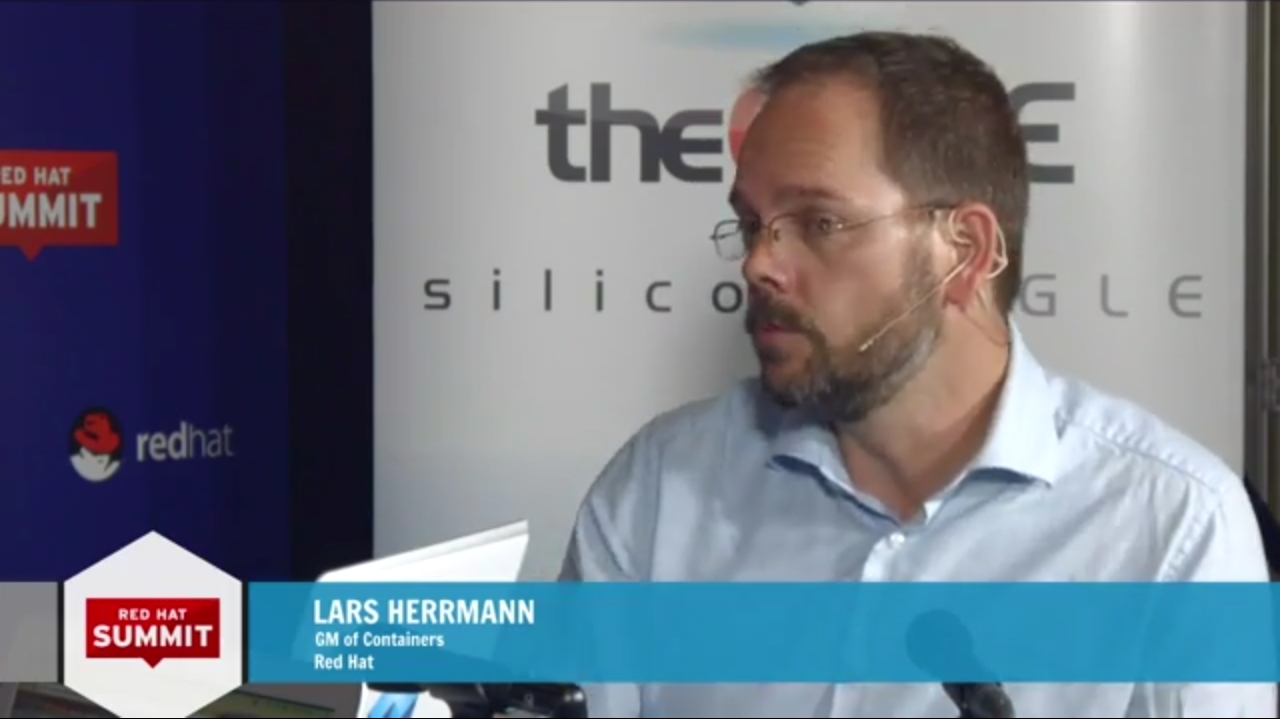 NEWS
NEWS
 NEWS
NEWS
 NEWS
NEWS
Containers have taken the tech world by storm this year, and Red Hat, Inc. is at the forefront of the revolution. According to Lars Hermann, GM of Containers at Red Hat, this is a longstanding trend that has finally gained traction.
“Our customers have been building kind of minimal-footprint Linux variants out of REL forever,” he said. “If you have less footprint, you have less attack surface and less dependence.”
Originally, this wasn’t a service that was easily turned into a product. “Now, in the container space, it becomes a lot more natural to productize and optimize container hosts because you have that line of separation; the container host kind of ends at the ability to run a container,” Hermann said. “And that is new, so therefore we can work against this line.”
The way Red Hat has differentiated their product is by embracing end-to-end service. “We drive a complete vision that we call the Atomic Application Architecture, which spans from the container host infrastructure … to include with what goes into the container, which none of the other guys really have … all the way to the management tools you need to hold it all together,” Hermann explained.
As well as establishing its own product line, Red Hat has contributed heavily into the rest of the community. “We’ve identified four areas of open standards that we need in the community, that we need in the container space,” Hermann added. “It starts in how the isolation in the Linux kernel is done, and that is not actually very controversial.”
“The second and probably most important one is the format, because … what Docker introduced is the notion of the image-based environment, so that is the format.”
The last two standards are “the ability to describe a multi-container application as a thing” and “the software distribution.” According to Hermann, “Docker introduced the registry protocol, which is conceptually very, very similar to many of the distribution technologies we have in Linux like RPM and Yahoo. And we actually believe there needs to be a standard in the mechanics of the distribution and then an open, federated namespace where it doesn’t actually matter which registry you talk to so much.”
These define Red Hat’s core tenets in the community. “If you see the way it was positioned, the way we designed it, is to really focus on these things,” Hermann said. In the end, he said, Red Hat’s vision is to “enable competition on the technology for the best solution for orchestration, for management, for services, for a lot of value that we start to see emerge in the ecosystem, but establish the open standards that hold the logical systems together.”
Watch the full interview below, and be sure to check out more of SiliconANGLE and theCUBE’s coverage of Red Hat Summit 2015.
THANK YOU